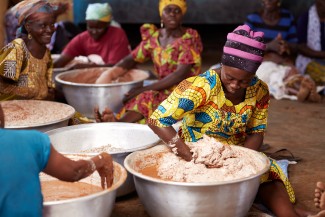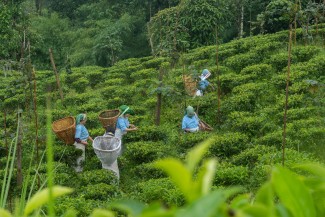Then Swedish Minister for Foreign Trade Ann Linde (now Minister for Foreign Affairs) discusses supporting developing country exports and the need to close the gender gap
Sweden just announced a new US$5 million commitment to the Enhanced Integrated Framework (EIF) to support trade in the least developed countries (LDCs). Why is this so important today?
First, the Swedish government is firmly committed to free and fair trade. And we are a strong supporter of the multilateral trading system, understanding that trade is the central driver of global growth and also for poverty reduction. That means that trade is an effective way to implement the Sustainable Development Goals and Agenda 2030, and therefore it is of vital importance that the LDCs also have the possibility to access the World Trade Organization (WTO) and to take part in multilateral trade and that is what the EIF is doing and has a central and I would stay strategic role in doing.
What do you hope to see as a result of this support for trade in LDCs?
I hope of course that we can see more developing countries taking part in the WTO. One of the good things at the WTO right now is that more developing countries have joined. Just lately for example Liberia and Afghanistan and now there are countries wanting to join like Somalia and Timor-Leste. So I think that this work that EIF is doing has shown results.
The LDCs’ share of global trade is less than 1%. What can we do to improve this?
We need to make sure that the level of aid for trade is larger. And that we make a case for that. I think that Sweden as a highly committed partner needs to talk to other European Union (EU) countries, not the least to make the case for aid for trade. There is a new initiative that my government is starting that we call Open Trade Gate Sweden where our National Board of Trade will take steps to get developing countries to export more to Sweden. We help them to export to our country, and this means developing knowhow on the rules, how you export to an EU country, and also what kind of products it is possible to export to Sweden and the EU. And we will also try to support actual deals, not only saying this is possible but to find importers from Sweden and the EU and make actual deals. This is taking trade support a step further.
Women’s empowerment is a cornerstone of your government’s agenda. How can aid for trade to LDCs help achieve that?
We know that women continue to face barriers in the economy and they have poorer outcomes than men. Here at this year’s Aid for Trade Global Review 2019 there have been so many panels and meetings just talking about this with concrete situations where women do not have the same opportunities as men. For example, in customs where women are harassed or where women don’t have the possibility to trade. Several representatives from African countries mentioned artisan work and that it is much more difficult to get through customs.
We will also try to support actual deals, not only saying this is possible but to find importers from Sweden and the EU and make actual deals. This is taking trade support a step further.
Ann Linde, Then Swedish Minister for Foreign Trade (now Minister for Foreign Affairs)
We know that closing this gender gap could lead to poverty reduction and returns for women and their families. I think we can see that there are an increasing number of aid for trade projects with a gender focus, but there is still potential for more. Since the start of the Aid for Trade Initiative around US$342 billion in official development aid has been targeted to finance trade programs and projects, and the LDCs have received a quarter of that.
At the same time when OECD did a review they could see that there is only a small part of gender-marked aid for trade that is going to trade policy initiatives and I think that’s something that we need to work for and make it a pillar. We have to call for donors to allocate gender-marked aid for trade policy projects. What I’ve been saying in many of the panels I have been taking part in here is that to do the right things we need the right data and there is not disaggregated data on women and men. Even in Sweden we don’t have this – we have it for everything that has to do with work and school and so on – but not when it comes to development aid.
We’re here at the tail end of the Global Review 2019. Anything you’d like to highlight from your experience?
When I was here two years ago I was on one panel on gender and I said then I really hope that the next Review will focus much more on gender – and that has actually happened. Including everything from this book launch on women and policy making [Women Shaping Global Economic Governance] and there have been several different panels on different aspects of gender in aid for trade and also in general women and trade and how we can work together from developing and developed countries to have a gender perspective.
So I would say that there is a big difference in this year’s Review compared to two years ago and that is good. What is not so good is that there are only two ministers from EU countries or even from Western countries here and I think that there has to be more. For my part I will speak to my fellow trade ministers in the EU and tell them how important this is and I hope that at the next Review there will be more ministers. That is what I hope for.
If you would like to reuse any material published here, please let us know by sending an email to EIF Communications: eifcommunications@wto.org.


